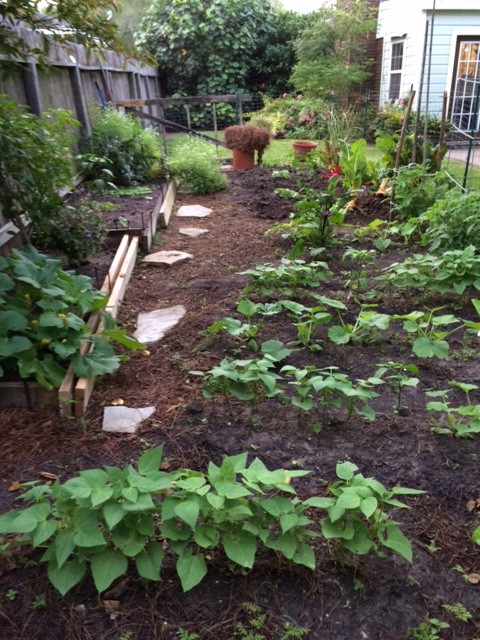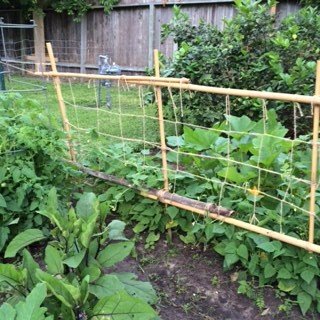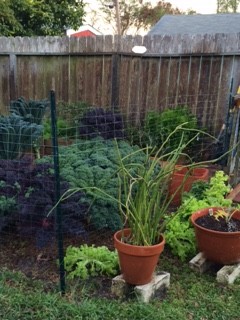
So now that you’ve done all your decision making and soil prep, let’s talk about planting. Most spring veggies love warm days and cool nights. 70’s and 50’s are perfect for all spring veggies and herbs. South Texas spring starts early and ends early as the heat of summer takes over. To maximize your planting, plant early in the season but be prepared to protect warm weather plants in case of late season cold fronts.
Seeds & Transplants
Most all edibles grown here can be started from seed. Again it is an experience everyone should try. Some plant seeds sprout in several days and some just a few. Our Botanical Interest Seeds are non GMO and many are organic. The link to our hand out from last week gives you some ideas of what can be grown from seed with good success. You can start many of your seeds in small containers (even those old egg cartons), so you can keep an eye on them before transplanting in your garden space. Use a good seed starting soil mix like Fertilome Seed & Cutting Mix. Keep them in a warm, sunlit area with moist soil. Label what you plant, so you can remember who’s who. Once they are up with their first set of real leaves, they can be planted. I have also started many of my gardens with seed sowed directly in the soil. Again making sure to mark what is where not to confuse tiny sprouts with weeds. Some of my favorites are pole beans or bush, swiss chard, squash, turnips, beets, carrots, collards, cilantro, basil, cucumbers, and okra.
Transplants give you a head start on some of the edibles that can take time to start from seed. Tomato, peppers, broccoli, cauliflower, cabbage, and onion are just a few you will find in our nursery during spring. Most herbs are found in transplants as well giving you instant flavor with a snip of a sprig! Herbs and most leafy greens can and should be trimmed on as you want them, allowing the mother plant to be a continued source of food and flavor throughout the season.
 Ready to Plant
Ready to Plant
Lay out the plants with room to grow. Give yourself room to be able to harvest your food. This also allows air circulation to help prevent disease and bug issues. Dig your holes only as deep as the transplants or follow the planting depth on the seed package. Mix a little Rocket Fuel, adding Plant Tone or Bio-tone to the hole, mix into the soil, place your seed or plant, firm up soil around them, water, and repeat. When you’re all done, mulch the area to help with water retention and weed prevention. I like the pine straw as it’s fluffy and aids in supporting the new tender plants.
Spring Veggies & Herbs
Tomatoes are America’s favorite home grown edible. Picking a handful of cherry tomatoes or one ripe slicing is all the enticing you’ll need to try your hand at growing them. Starting them now allows the plant time to get to size & begin to bloom so they will set fruit before night temps get too hot. Hybrid varieties are bred for disease resistance and better fruit production. Heirloom varieties are flavorful and have unique colorations. They are not as resistant to many of the diseases tomato plants can get. All tomatoes need to have some support. A cage or trellis works great. This helps support the plant when they are heavy with fruit. There are basically 2 types of tomatoes, determinate and indeterminate. Determinate produces most all its fruit at one time and indeterminate produces less but over a longer period. Many of the cherry type tomatoes are indeterminate.
 Others to plant now:
Others to plant now:
- Since it is still winter and cold is probably not done yet, you could start a few of winter fav’s like broccoli and cauliflower. Neither takes too long to produce so worth planting.
- Seed potatoes and onion sets should be planted now. Being a root plant they both like very good drainage. Planting them in raised beds or large containers work great. Other root edibles like beets, turnips, radishes offer double the bounty; you can eat the tops and the roots.
- Leafy greens like Swiss chard, lettuce, kale, spinach can tolerate some cold weather. Your garden can be your smoothie bar with just a few of these growing!
- Cucumbers, beans, peas, and climbing spinach are vining plants and will need support. You can use your fence, build your own with poles and heavy twine or simply add a trellis to your garden.
- Peppers, okra, eggplant, and most melons need more heat and will not tolerate much cold. These are better started later in spring for better success.
- Herbs for spring include basil, cilantro, mints, thymes, rosemary, oregano, parsley and sage.
Now that everything is planted:
Water everything well and check your garden area daily for water needs. Your young plants and seeds will need to stay hydrated but not drowned. They may even need 2 waterings a day when our humidity is low, winds are high & sun is shining.
After a week, fertilize with Hasta-Gro plant food. It’s organic and safe. I use the hose end to make it easy. It mixes for you. You should do this once to every other week.
Finally, I like to take a picture of my newly planted garden and then again each week to see how fast everything is growing. You will be amazed!
-Debbie







